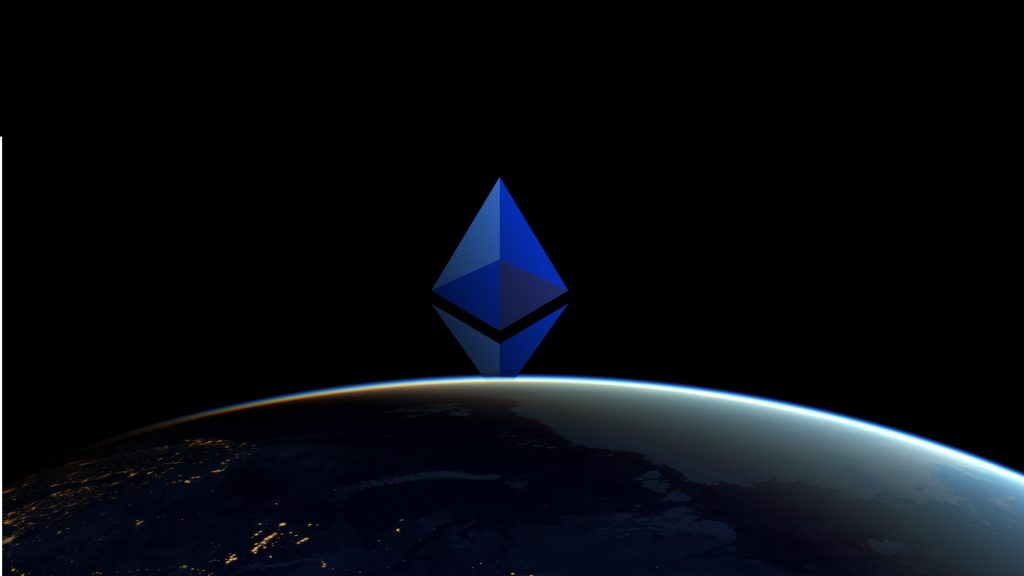
At its core, Ethereum is a global software platform powered by blockchain technology. It is best known for its native cryptocurrency, Ether (ETH). Anyone can use Ethereum to create any secure digital technology. It has tokens designed to pay for services performed in support of the blockchain, but participants can also use it to pay for tangible goods and services if approved.
Ethereum is designed to be scalable, configurable, secure, and decentralized. It is the blockchain of choice for developers and companies that create technology based on it to change the number of companies that work and the way we go about our daily lives. It supports smart contracts, an essential tool behind decentralized applications.
Many decentralized finance (DeFi) and other applications use smart contracts in conjunction with blockchain technology.
How does Ethereum work?
You may have heard of the Bitcoin blockchain as a bank ledger, or even a checkbook. This is a running tally of every transaction made on the network since the beginning – and all the computers in the network have the ability to calculate them to ensure that the tally is accurate and secure.
On the other hand, the Ethereum blockchain is like a computer: although it also performs the function of recording and storing transactions, it is more flexible than the Bitcoin blockchain. Developers can use the Ethereum blockchain to create a variety of tools – from software management applications and games to the whole world of DeFi applications (which covers lending, borrowing, trading, etc.).

Ethereum uses a “virtual machine” to do all of this, which is like a giant global computer with many individual computers running Ethereum software. Building all these computers involves investment in hardware and electricity by the participants. To cover these costs, the network uses its own Bitcoin-like cryptocurrency called Ether (or, more commonly, ETH). ETH makes everything go. You interact with the Ethereum network using ETH to pay network fees to execute smart contracts. Therefore, the payment in ETH is called “gas”.
Gas prices vary according to network usage. A new version of the Ethereum blockchain called Ethereum 2.0, which aims to increase efficiency, was launched in December 2020. (The transition to the new blockchain is expected to take place within the next two years.)
Features of Ethereum
- Ether: This is the cryptocurrency of Ethereum.
- Smart contracts: Ethereum facilitates the creation and implementation of these types of contracts. Ethereum Virtual Machine: Ethereum provides the underlying technology – architecture and software – that understands smart contracts and allows you to interact with them.
- Decentralized Applications (Dapps): Individually deployed applications are called Dapp (also called DAPP, App or DApp) for short. Ethereum allows the creation of decentralized applications, which are called decentralized applications.
- Decentralized Organization (DAO): Ethereum allows you to create these things for democratic decision-making. These are the important features of Ethereum. Before we dive into the Ethereum tutorial, let’s consider each of these features in more detail.
Ether
Ether (ETH) is the currency of Ethereum. It is the fuel that makes the network work. It is used to pay for accounting and transaction fees for every transaction executed on the Ethereum network. Like Bitcoins, Ether is a peer-to-peer currency. Besides paying for transactions, Ether is also used to buy gas, which is used to pay for the computation of every transaction made on the Ethereum network.
Also, if you want to enter a contract with Ethereum, you will need gas, and you will pay for the gas in ether. So, gas is the execution fee paid by the user to execute a transaction on Ethereum. Ether can be used to build decentralized applications, create smart contracts, and make regular peer-to-peer payments.
Smart contract
Smart contracts change the way traditional contracts work, which is why you need to familiarize yourself with them. A smart contract is a simple computer program that facilitates the exchange of any asset between two parties. It can be money, stocks, commodities, or any other digital asset you want to trade. Anyone on the Ethereum network can create these contracts. This agreement is usually the terms and conditions agreed upon between the parties (peers).
The main feature of the smart contract is that once it is executed, it cannot be changed, and every transaction made in addition to the smart contract is completely recorded – it is immutable. So even if you change the smart contract in the future, the transactions related to the original contract will not be changed; you can’t change them.
The smart contract confirmation process is done by an anonymous part of the network without the need for centralized authority, and this is what makes every smart contract execution in Ethereum a decentralized execution. Any property or money is transferred transparently and reliably, and the identity of both companies is stored on the Ethereum network. Once the transaction is completed successfully, the account of the sender and receiver are updated, which creates trust between the parties.
How to buy Ethereum?
This can be done through a crypto exchange like Coinbase or through online platforms like Gemini, Kraken, or eToro. You create an account with your chosen provider by confirming your address and identity, then log into your bank account to buy the money. Fees vary from provider to provider and may depend on the amount you want to deposit, (optionally) withdraw and the transaction you want to make. Payment methods can include those via debit/credit card, PayPal and bank transfer. New traders may require a greater level of customer support compared to seasoned traders.
Main purpose of Ethereum
Ethereum is the result of research by a young programmer named Vitalik Buterin. After studying Bitcoin for a long time, he realized the end result. Bitcoin has only one purpose: to facilitate the settlement of financial transactions online through a decentralized virtual currency system. The creator of Ethereum thus wants to take the field of real crypto-currency beyond. In 2013, he suggested that the blockchain platform has other features. Buterin thus introduced the concept of smart contracts that allow any type of application to run automatically when certain conditions are met. This was brought about by Turing-Complete, a computer language that simplifies the development of such applications.
Advantages of Ethereum are:

Don’t lose Ethereum
Ethereum is decentralized in nature, which means that it distributes trust and knowledge efficiently among members. This feature eliminates the need for the center in the transaction.
Fast delivery
Instead of building a blockchain from scratch, companies can use software systems like Hyperledger Besu to manage and build the blockchain at a private level.
The network has a license
Ensuring compliance with security and regulatory requirements, many open source protocols have enabled companies to rely on the private or public Ethereum network.
Network size
The size of the network must exceed certain limits due to the critical nature of the network for business collaboration. Most commercial blockchain adversaries operate less than 10 nodes and have little experience with large-scale systems. The team behind Ethereum recently demonstrated the power of the Ethereum network with millions of users.
The business is not public
By combining personal relationships with transactions based on a personal level, companies can achieve granularity and privacy with Ethereum. As Ethereum is encrypted, private information cannot be viewed by anyone. It is reviewed only by those authorized to access it.
Performance and Scalability
Due to the proof of government support and the time and resource constraints of the bespoke portal, the connection system built on Ether can exceed the global energy capacity and scale up to several transactions per second. System enhancements such as stacking and some layer pairs of scalability such as state channels and plasma. This will allow Ether to increase its capacity in the coming years.
Purpose
The blockchain protocol ensures that transaction records should be kept in a canonical and non-canonical format. Ethereum also offers consensus mechanisms, such as IBFT and RAFT. Proof-of-work algorithms also require reduced resources and real-time transactions
An open and interactive environment
The single-vendor computing environment is not limited to consortia on Ethereum. With Ether’s maintenance recommendations, Ether’s ecosystem, such as the Java Enterprise, promotes improvements in the source.
Tokenization
With Ether, you can invest any asset that has been discovered in a technical sense. By tagging assets, organizations can segment investments, change their product lines, and create new reward systems.

